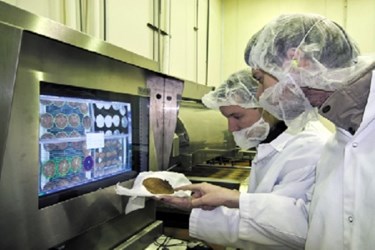Protecting Your Brand: Using Detectable Components In Food Processing
By Melissa Lind, contributing writer

One of the critical parts of food-safety inspection is the ability to identify non-food contaminants. However, many contaminants are not easily detected by even the most modern detection systems. Whether your company uses X-Ray or metal-detection technology to ensure safety in your food-processing line, using components and instruments that are easily detected may make life easier.
Today’s inspection technology is highly advanced and able to detect many food contaminants with automated systems that don’t require direct visual supervision by multiple employees. Still, these technologies have some Achilles’ heels, including: rubber, plastics, silicone, and textiles.
X-Ray detection systems are highly flexible, having the ability to be used at most points in the food-processing line. They are also able to detect a wide variety of dense contaminants. Unfortunately, they cannot detect contaminants with densities that are similar to the food being processed and cannot easily identify lower-density contaminants.
Metal detection is further from the mark with virtually any non-metal contaminants. This means bandages, hair nets, rubber bands, gloves, and fragments of plastic and/or rubber from machinery may sneak into the final product.
Video: Will X-Ray Inspection Replace Metal Detection In Food Processing?
Detectable components, manufactured specifically to be identifiable by automated safety systems can help your company avoid costly recalls. One lost bandage or hair net can go viral on the internet, and though it may pose a minimal physical threat, the threat to your customer loyalty can’t be measured. Even a non-personal contaminant, such as plastic wrap fragments, can have a significant impact on your brand identity.
Detectable components are available from a number of vendors who manufacture items that are designed to be identified by X-Ray and metal detection systems. Some items may already be in the product line, but others can be created to your specifications. Detectable components include items such as:
- Hair Nets
- Bandages
- Touch Screen Pens
- Rubber Bands
- Plastic Wrap
- Gloves
- ID Tags
- Traceability Tags
- Tie-Wraps
- Gaskets
- O-Rings
- Cable Clamps And Ties
- Scrapers
- Paddles
- Studs
- Boards
FSMA and similar legislation demand that food processors identify likely threats to food safety and work diligently to eliminate those trouble spots. Strict enforcement of “no-pocket” rules for employees and routine maintenance of machinery can reduce contamination potential, but policy and procedure won’t address every issue.
Considering a switch to detectable components for often overlooked material hazards can help food processors to ensure regulatory compliance and avoid recalls. At the same time, they help in maintaining customer loyalty with improved product quality.
